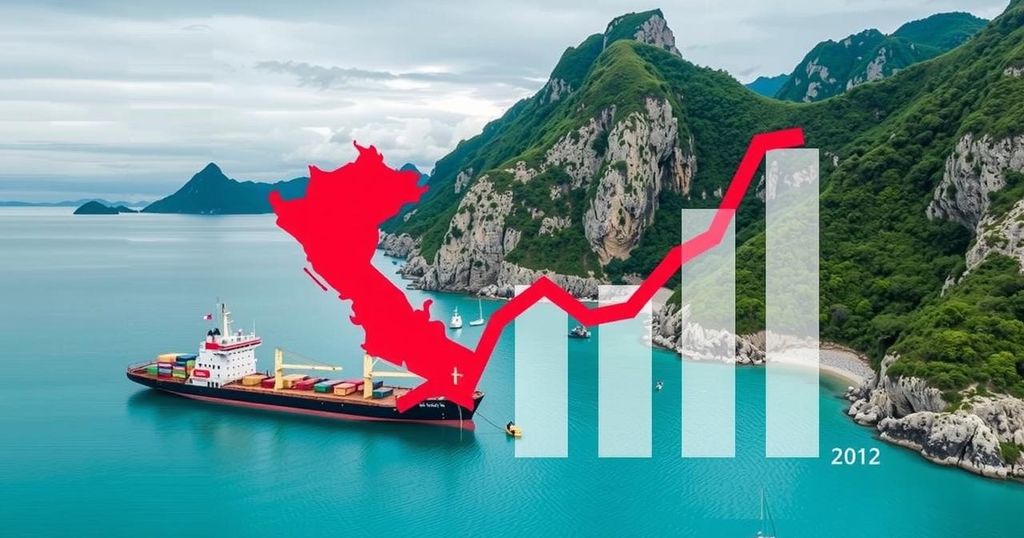Peru’s Exports Surge 15.8% in January-November 2024, Driven by Mining and Agro-Industry

Peru’s exports increased by 15.8% from January to November 2024, totaling US$67.558 billion. The positive export trend was highlighted by a significant 27% growth in November, continuing a seven-month upward trajectory. However, some sectors saw declines, including fishing and textiles, raising concerns for ADEX leaders. In contrast, mining and agro-industry sectors thrived, underscoring the diverse nature of Peru’s export portfolio.
Peru’s exports reached US$67.558 billion in the first eleven months of 2024, reflecting a notable increase of 15.8% from US$58.348 billion in the same period of 2023, as reported by the Peruvian Exporters Association (ADEX). This growth was particularly influenced by a robust performance in the last seven months of the year. November alone saw shipments valued at US$7.377 billion, marking a remarkable 27% increase and representing the seventh consecutive month of positive export growth.
Despite the overall positive trends, ADEX Chairman Julio Perez Alvan voiced concerns regarding five sectors that experienced declines during this period, including fishing for direct human consumption (-24.2%), non-metallic mining (-13.2%), and textiles (-0.9%). Furthermore, there was a minor drop in hydrocarbons in the primary sector (-2%). Conversely, sectors such as mining, agro-industry, iron-steel, and metalworking achieved historic export figures, showcasing diversification in Peru’s export portfolio.
According to the Export Report for November 2024, traditional exports totaled US$49.099 billion, exhibiting a 17.7% year-on-year increase. This was driven primarily by mining shipments, which amounted to US$41.980 billion, marking a 16.7% rise, as well as significant contributions from primary fishing and agriculture. Key products include copper and gold, which constituted 61.6% of total exports, with major markets being China, followed by other countries including India and Canada.
In contrast, non-traditional exports recorded US$18.459 billion, a 10.9% increase from the previous year. Six out of ten subsectors reported robust results, particularly agro-industry and chemicals, while blueberries emerged as a standout item with an export value of US$2.108 billion. The United States remained the leading destination for these products, contributing significantly to overall exports from non-traditional sectors.
The Lima and Callao region alone generated US$16.148 billion in exports, reflecting a growth of 19.1% and representing a substantial share of total exports. The coastal areas performed well, accounting for over half of the shipping volume, signifying the economic importance of regions like Ica and Arequipa. The trade balance for this period closed positively with a surplus of US$17.549 billion, highlighting Peru’s favorable international trade dynamics.
In recent years, Peru has significantly expanded its export capacity, particularly in sectors such as mining and agriculture. Amidst a global economic landscape that is continuously evolving, the Peruvian government and industry stakeholders emphasize the importance of diversification and overcoming challenges faced by underperforming sectors. The figures released by ADEX provide insight into the nation’s economic progress and areas requiring attention, reflecting the complexities of international trade for Peru.
The increase in Peru’s exports during the first eleven months of 2024 demonstrates a strong overall performance and reflects the resilience of key sectors such as mining and agro-industry. Despite certain sectors facing challenges, the growth in traditional and non-traditional exports points to successful opportunities within the market. Furthermore, maintaining a positive trade balance indicates the effectiveness of Peru’s export strategies and the potential for continued growth in the years ahead.
Original Source: andina.pe








